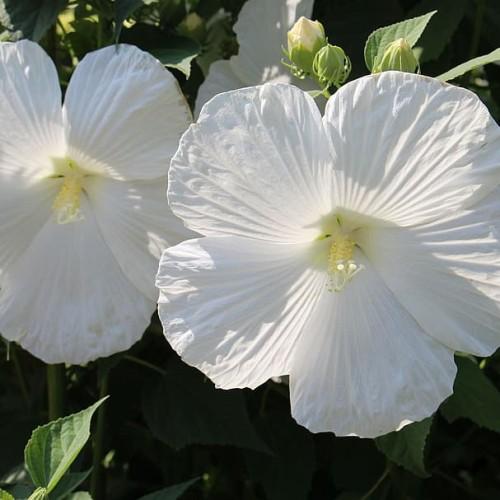
hardy hibiscus
Hibiscus 'Blue River II'
Cycle:
Herbaceous Perennial
Watering:
Frequent
Hardiness Zone:
5 - 9
Flowers:
Flowers
Sun:
Full sun
Leaf:
Yes
Growth Rate:
High
Maintenance:
Low
Care Level:
Medium
watering
Hardy hibiscus (Hibiscus 'Blue River II') should be watered throughout the growing season, from the early Spring months to the late Autumn months. During the hottest and driest months of summer, it should be watered on a regular basis. It is best to water the plant deeply and then allow the soil to dry out in the top inch or 2 before re-watering. If possible, it is best to water in the morning. Additionally, during particularly hot and sunny days, it may be necessary to water twice a day to keep the soil from becoming too dry. Hardy hibiscus also likes plenty of humidity, so make sure to mist the leaves regularly.
sunlight
Hardy hibiscus (Hibiscus 'Blue River II') should have at least 6 hours of direct sunlight each day during the growing season. It is best to provide full sun in the morning and late afternoon shade to avoid leaf burn. In very hot climates, morning sun and afternoon shade should be provided. In very shady or cloudy climates, a full sun location is best. Too much shade may lead to a tall, weak and leggy growth habit. The flowering can also be reduced with less sunlight.
pruning
It is important to prune hardy hibiscus (Hibiscus 'Blue River II') regularly in order to encourage healthy growth and promote blooming. Pruning should be done in early spring, after any danger of frost has passed. The amount of pruning necessary depends on the size and shape of the plant, but generally Hardy Hibiscus should be pruned back to a height of 3 to 5 feet, removing dead wood, crossing branches, and reducing size and density. It is also important to shape the shrub as desired, such as removing lower branches to increase air circulation. Finally, it is recommended to remove any damaged branches or those that are diseased or damaged.
